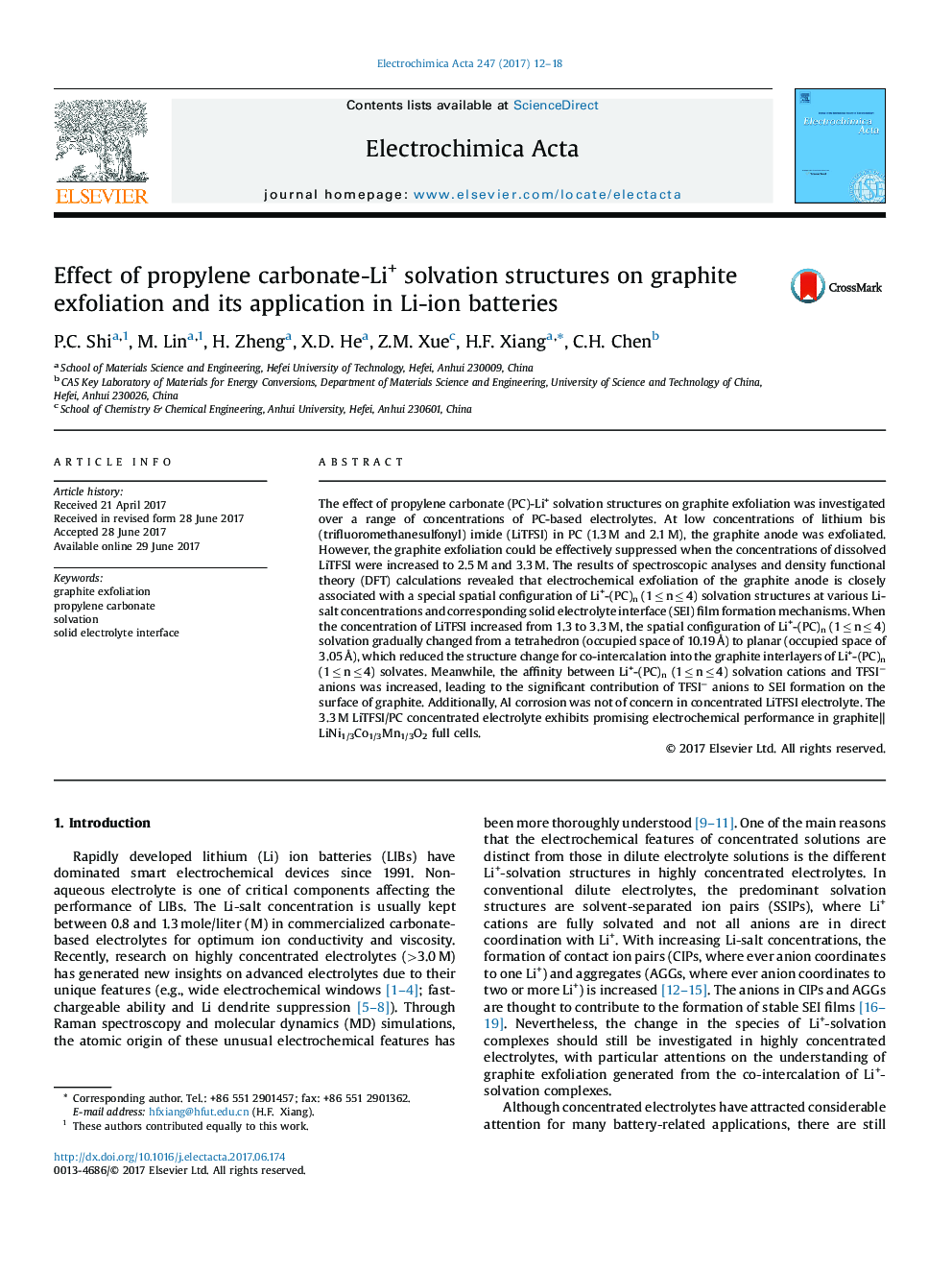| Article ID | Journal | Published Year | Pages | File Type |
|---|---|---|---|---|
| 6470907 | Electrochimica Acta | 2017 | 7 Pages |
The effect of propylene carbonate (PC)-Li+ solvation structures on graphite exfoliation was investigated over a range of concentrations of PC-based electrolytes. At low concentrations of lithium bis(trifluoromethanesulfonyl) imide (LiTFSI) in PC (1.3 M and 2.1 M), the graphite anode was exfoliated. However, the graphite exfoliation could be effectively suppressed when the concentrations of dissolved LiTFSI were increased to 2.5 M and 3.3 M. The results of spectroscopic analyses and density functional theory (DFT) calculations revealed that electrochemical exfoliation of the graphite anode is closely associated with a special spatial configuration of Li+-(PC)n (1 â¤Â n â¤Â 4) solvation structures at various Li-salt concentrations and corresponding solid electrolyte interface (SEI) film formation mechanisms. When the concentration of LiTFSI increased from 1.3 to 3.3 M, the spatial configuration of Li+-(PC)n (1 â¤Â n â¤Â 4) solvation gradually changed from a tetrahedron (occupied space of 10.19 à ) to planar (occupied space of 3.05 à ), which reduced the structure change for co-intercalation into the graphite interlayers of Li+-(PC)n (1 â¤Â n â¤Â 4) solvates. Meanwhile, the affinity between Li+-(PC)n (1 â¤Â n â¤Â 4) solvation cations and TFSIâ anions was increased, leading to the significant contribution of TFSIâ anions to SEI formation on the surface of graphite. Additionally, Al corrosion was not of concern in concentrated LiTFSI electrolyte. The 3.3 M LiTFSI/PC concentrated electrolyte exhibits promising electrochemical performance in graphite||LiNi1/3Co1/3Mn1/3O2 full cells.
